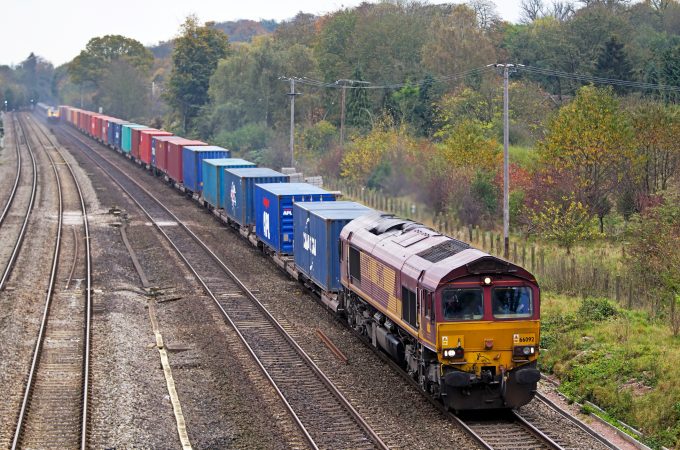Ocean freight hits the jackpot as cherries line up for a controlled modal switch
For a number of airlines, the cherry season marks a highlight on the calendar: over ...
TFII: SOLID AS USUALMAERSK: WEAKENINGF: FALLING OFF A CLIFFAAPL: 'BOTTLENECK IN MAINLAND CHINA'AAPL: CHINA TRENDSDHL: GROWTH CAPEXR: ANOTHER SOLID DELIVERYMFT: HERE COMES THE FALLDSV: LOOK AT SCHENKER PERFORMANCEUPS: A WAVE OF DOWNGRADES DSV: BARGAIN BINKNX: EARNINGS OUTODFL: RISING AND FALLING AND THEN RISING
TFII: SOLID AS USUALMAERSK: WEAKENINGF: FALLING OFF A CLIFFAAPL: 'BOTTLENECK IN MAINLAND CHINA'AAPL: CHINA TRENDSDHL: GROWTH CAPEXR: ANOTHER SOLID DELIVERYMFT: HERE COMES THE FALLDSV: LOOK AT SCHENKER PERFORMANCEUPS: A WAVE OF DOWNGRADES DSV: BARGAIN BINKNX: EARNINGS OUTODFL: RISING AND FALLING AND THEN RISING

The economic and environmental imperatives for UK shippers and importers to switch inland distribution from road to rail are becoming increasingly hard to ignore, according to senior staff at the Chartered Institute of Logistics and Transport (CILT).
Julian Worth, chair of CILT’s rail freight forum, told delegates at the inaugural session of today’s Multimodal event in Birmingham that moving containers from the UK’s ports to a rail-connected warehouse in the country’s “Golden Triangle” – the area in the Midlands that houses most of the UK’s national distribution centre warehouse capacity – was 30% cheaper per box.
This had already created a significant increase in demand for intermodal services, he said.
“Until a few years ago, coal was the dominant cargo on the UK’s railways. But it has declined a lot, and last year volumes dropped by 64%. However, overall freight tonnage on the network only declined by 4%, which indicates that other types of cargo saw large growth – around 5,000 lorry loads a day are moving on rail.”
More capacity for growth is on its way. Mr Worth described capacity upgrades at Felixstowe as the number-one priority for the intermodal industry. Currently the line into the port is at capacity and handles 33 trains a day in each direction.
“But by the end of 2019, Network Rail will have completed an expansion at Felixstowe that will take that capacity up to 45 trains a day in each direction, almost a 50% increase in capacity,” said Mr Worth.
“The other part of the scheme is improving the east-west rail capacity, and that means creating a direct route from Southampton to the Golden Triangle, which will help bring down the cost of medium-length routes.”
However, he warned that shippers and their 3PLs would be unable to use much of the growth in capacity unless there was further investment in rail-connected warehousing.
“The ability to move loads on private roads within logistics estates directly off trains will be very, very important because of the cost advantages.
“And equally, these rail-connected sheds allow shippers to do the next stage of their supply chains, which is connecting national distribution centres with the regional distribution centres, and possibly even moving goods into the stores.”
Rupert Dyer, a member of CILT’s rail freight forum, added that concurrent with this increase in capacity was an increase in smaller consignment sizes on some routes.
“GB Railfreight has repurposed passenger rolling stock and now loads palletised and e-commerce traffic from national distribution centres in the Midlands into London – two services a day at the moment, and that’s just one example.
“In five years, intermodal has taken over from bulk and in five years’ time I expect to be talking about the success of rail’s new pallets and portions strategy,” he added.
Comment on this article
Bobulus
July 08, 2017 at 3:08 pmI notice there is a remarkable absence of rail connected warehouses and distribution depots in the UK. They are about as common as Fairy Dust! Network Rail seems eager to sever connections if a freight flow ceases. But I bet logistics executives are locked into a “rail is a non starter” script. Then there are the UK planing laws which can scupper the most minor development. Any more ideas about the myriad of obstacles here?